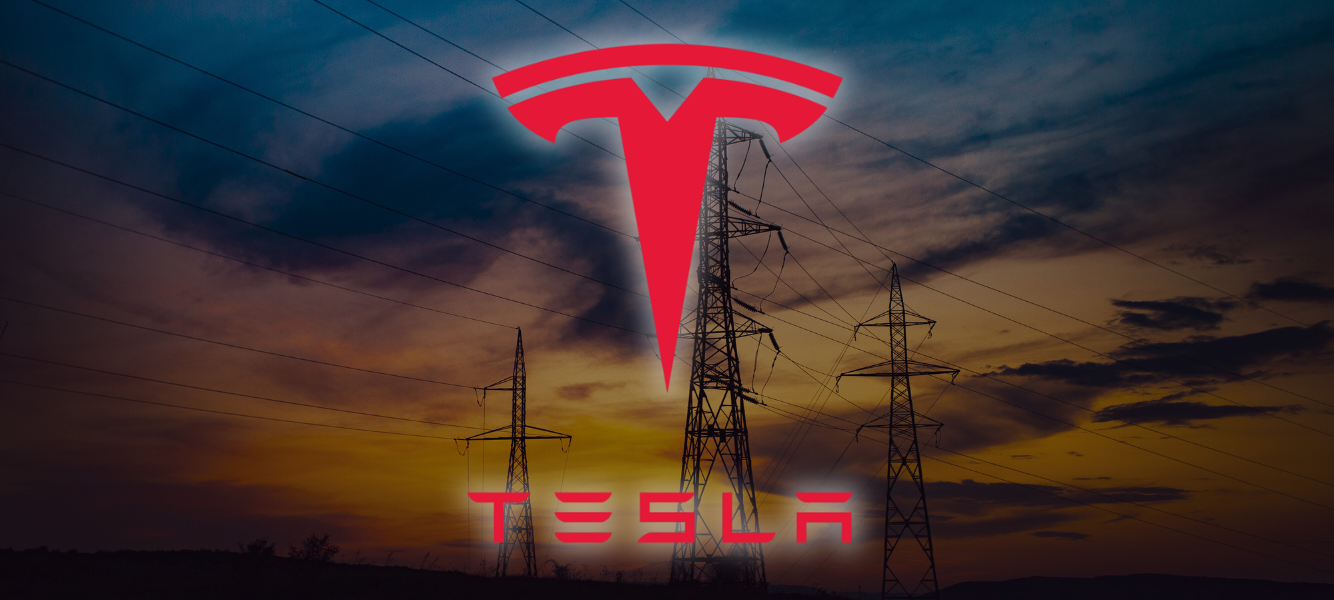Tesla has lodged a formal application with Ofgem for a Great Britain electricity supply licence, signalling intent to sell power directly to homes and businesses across England, Scotland, and Wales.
The notice, submitted by Tesla Energy Ventures Limited, was published by the regulator on 25 July 2025 with a consultation window closing on 22 August 2025.
If approved, Tesla would move from a hardware and generation footprint to retail supply, sitting alongside established names such as British Gas, Octopus, and OVO.
Early reporting suggests Ofgem’s assessment could take up to nine months, which would put a potential go-live in 2026.
It is a significant pivot for the company at a time when the European EV market, including the UK, has become more competitive.
July registrations for Tesla in the UK were reported to be sharply lower year on year, which places more attention on energy as a second growth engine.
What exactly has Tesla applied for
The application is for an electricity supply licence, not gas.
In practice, a granted licence would allow Tesla to set tariffs, bill customers, and participate in the balancing and wholesale markets in its own right, rather than through a partner.
Ofgem’s public notice confirms the applicant entity and the consultation timeline. Separate to this, Tesla already holds a UK generation licence, granted in June 2020.
The company is not seeking a gas licence at this stage.
That matters because most British households still heat with mains gas, which has historically favoured dual-fuel suppliers for customer acquisition and retention.
Why now, and why the UK
Three dynamics converge.
First, the UK is a mature smart-meter market with a lively time-of-use tariff ecosystem, which suits software-driven suppliers that can optimise demand across millions of devices.
Second, Tesla already has meaningful assets and brand recognition here, from vehicles and home chargers to Powerwall storage systems, which provides a ready base of early adopters.
Third, the company has tested retail energy models elsewhere, notably in Texas through “Tesla Electric,” which blends retail supply, behind-the-meter storage, and virtual power plant services.
The move also builds on Tesla’s UK history.
Tesla and Octopus Energy launched a UK “Tesla Energy Plan” in 2020 to aggregate Powerwall homes into a virtual power plant.
That plan has since been retired, suggesting Tesla now prefers to run the proposition itself if it has the right licence.
What Tesla Electric looks like in practice
The closest analogue is Texas.
There, Tesla Electric offers retail tariffs that integrate with the Tesla app, Powerwall, and, optionally, rooftop solar.
Customers on the Dynamic plan can export stored energy and receive the majority of the real-time market price, while also earning monthly VPP credits.
In plain terms, a home battery becomes a small trading asset that flexes with grid needs, optimised by Tesla’s software.
Translating that to Britain is feasible because GB already supports smart time-of-use tariffs and pays for flexibility through the balancing mechanism and ancillary services.
With a supply licence, Tesla could unlock integrated propositions, for example, cheaper EV charging at off-peak times, automated export during system tightness, and tariff bundles for customers who own a Powerwall or plan to install one.
The UK has seen these models before in partnership form.
The difference now is that Tesla would control the retail relationship end to end.
How this could disrupt the supply market
There are three obvious points of disruption.
1. Software-led flexibility at household scale
If thousands of Powerwalls and EV chargers can respond within seconds to system signals, the aggregated effect looks like a fast-ramping power plant.
It smooths peaks, reduces reliance on peakers, and can cut system costs.
VPPs already operate across Europe and the US, with studies indicating they can be materially more cost-effective than building peaking generation.
2. Energy as an app experience
Tesla’s app and device ecosystem could set new expectations for visibility, automation, and control, nudging incumbents to improve UX, analytics, and bundled services.
This mirrors what happened in EV ownership, where the charging and software experience proved as important as hardware.
3. Pricing and product innovation
Expect aggressive time-of-use products, export credit models, and potentially membership-style offerings for Tesla owners that cross-sell solar, storage, and vehicle charging.
The effect would be to increase competitive pressure on agile suppliers that already court EV and solar households.
Implications for the grid, VPPs and storage
A supply licence enables Tesla to use distributed assets to respond to grid conditions, which matters as Britain adds more variable renewables.
VPPs pool small resources, such as home batteries and smart EV chargers, and dispatch them as a single flexible unit.
This helps with peak shaving, frequency response, and reserve. It also unlocks new revenue streams for households, improving the payback on storage and solar over time.
The UK is not starting from zero.
There have been VPP pilots and commercial programmes here for years, including the early Tesla–Octopus collaboration and network-led trials.
What changes with Tesla as a licensed supplier is the ability to integrate procurement, optimisation, settlement, and customer billing under one roof.
That improves speed to market and reduces friction for customers, which in turn can scale participation.
Consumer benefits and risks
Potential benefits
-
Lower bills for flexible users. Time-of-use optimisation can reduce import costs. Households with solar and storage may also earn credits through exports during system stress. The Texas model shows how battery owners can receive both market-linked export value and monthly VPP credits, which Tesla could adapt for GB market rules.
-
Better EV charging economics. Intelligent off-peak charging and solar-charge features can materially lower the cost per mile.
-
Resilience. For storage owners, automated backup keeps critical loads on during outages, which may become more compelling as extreme weather incidents rise.
Watch-outs
-
Not a dual-fuel offer. Tesla is not applying for gas, so it will not be a one-stop shop for dual-fuel households. Around 80% of dwellings in England and Wales still use mains gas for central heating, which could limit uptake among customers who prefer single-provider simplicity.
-
Tariff suitability. Time-of-use products reward behavioural change. Not every household or building type can easily shift demand.
-
Data and control. Customers should understand how automation decisions are made, how devices are controlled, and what happens during rare but extreme price spikes. These are solvable with clear disclosures, opt-outs, and safety caps, but transparency will be key.
Policy and regulatory questions to watch
There are several moving parts in GB retail energy rules that will shape Tesla’s offer.
-
Ofgem approval timeline. Reports cite up to nine months for licence approval, which would take a launch into 2026. Stakeholders can submit views during the consultation period.
-
Smart metering and settlement reform. Half-hourly settlement is central to rewarding flexibility. Continued progress here will sharpen price signals and improve customer value.
-
VPP market access. The ease with which an aggregator or supplier can bring distributed assets into ancillary services and the balancing mechanism will define the revenue stack for household flexibility.
-
Consumer protection. As energy becomes more dynamic, Ofgem will focus on clear communications, consent for automated control, and safeguards for vulnerable customers.
The UK is experienced at introducing new market participants and tariff types, but retail energy is still heavily regulated, which raises execution risk for any new supplier.
Talent implications across power and renewables
For employers and candidates, this story is bigger than a new retail brand.
It points to a step-change in skills demand across the power value chain.
Energy flexibility and trading
Suppliers that run VPPs need optimisation analysts, short-term traders, forecasting scientists, and route-to-market specialists who understand GB power markets, imbalance risk, and ancillary services.
Controls and software
Device cloud, API integrations with inverters and EV chargers, cybersecurity, and real-time data engineering are core. Grid-edge experience is a premium.
Field operations
Growth in home storage and EV charging means more qualified installers, site surveyors, and commissioning engineers. As warranty fleets scale, so do O&M teams that understand both electrical standards and software diagnostics.
Regulatory and consumer
Product managers and compliance specialists who can translate Ofgem rules into clear, fair tariffs will be in short supply, as will customer operations managers versed in dynamic billing and export crediting.
In short, supply, storage, and software are converging.
The companies that win will be those that combine power-market literacy with world-class product design.
That is where the UK skills gap is most visible, and it is where we expect hiring volumes to rise first.
What it means for incumbents and challengers
For large incumbents, Tesla’s brand and app-centric model could accelerate investment in customer experience, device integration, and flexibility services.
For agile challengers, particularly those already courting EV and solar owners, differentiation may shift toward service quality, partner ecosystems, and bespoke propositions for homes without Tesla hardware.
For networks and system operators, more responsive demand is unambiguously positive.
The challenge will be ensuring interoperability and open standards, so that homes can participate regardless of who built their battery or car.
What businesses should do next
-
Audit your flexibility stack. If you are a supplier, aggregator, or large energy user, assess your capability to procure, optimise, and settle flexibility at scale. Identify gaps in forecasting, control, and data engineering.
-
Invest in workforce planning. The UK is short of flexibility traders, data scientists with power-market context, and grid-edge software engineers. Build training plans and succession pipelines now.
-
Prepare the customer journey. Dynamic energy only works if customers trust it. Update consent flows, price communications, and in-app controls so users know what is happening and why.
-
Scenario-plan for competitive responses. If Tesla pushes down off-peak EV charging prices or pays rich export credits during tight hours, how will your product set respond without eroding margin or compliance?
The bigger picture for UK energy
Tesla’s entry is not the whole story, but it is a catalyst.
The UK will need more flexible demand to integrate renewables at pace and keep system costs in check.
If Tesla can bring software, scale, and user experience to that problem, it will push the entire market to evolve faster.
Crucially, this is also about consumer choice.
More competition in smart tariffs, export credits, and bundled solar-storage offers is likely to improve value for households that can flex.
The risk, as always, is that innovation benefits early adopters first.
Regulators and suppliers should keep accessibility front of mind so renters, flats, and lower-income households are not left behind.
Our take at Astute
From a talent perspective, this is the next phase in the power transition.
Demand for people who can blend market operations with controls, software, and customer experience is rising.
Employers that move quickest on capability building and workforce planning will have an edge when flexibility becomes a core earnings driver, not a side product.
How Astute can help
If you are building out flexibility trading, VPP operations, or grid-edge software teams, we can help you secure the right people at pace. Speak with our Power team about current hiring plans or upload your CV to explore live roles today.
CTA: Drop us a message to discuss hiring plans for flexibility and VPP roles, or click the link in the comments to see our latest opportunities.
Sources and further reading
-
Ofgem notice of Tesla Energy Ventures’ electricity supply licence application and consultation window.
-
Ofgem notice confirming Tesla’s UK generation licence grant in 2020.
-
Reporting on expected approval timelines and the electricity-only scope of Tesla’s bid. The TimesTechRadar
-
Tesla Electric reference model and Dynamic plan features in Texas.
-
Background on the retired Tesla–Octopus UK Energy Plan and VPP model. Octopus EnergySolar Power Portal
-
Context on household heating fuels, showing the dominance of mains gas in England and Wales.


















